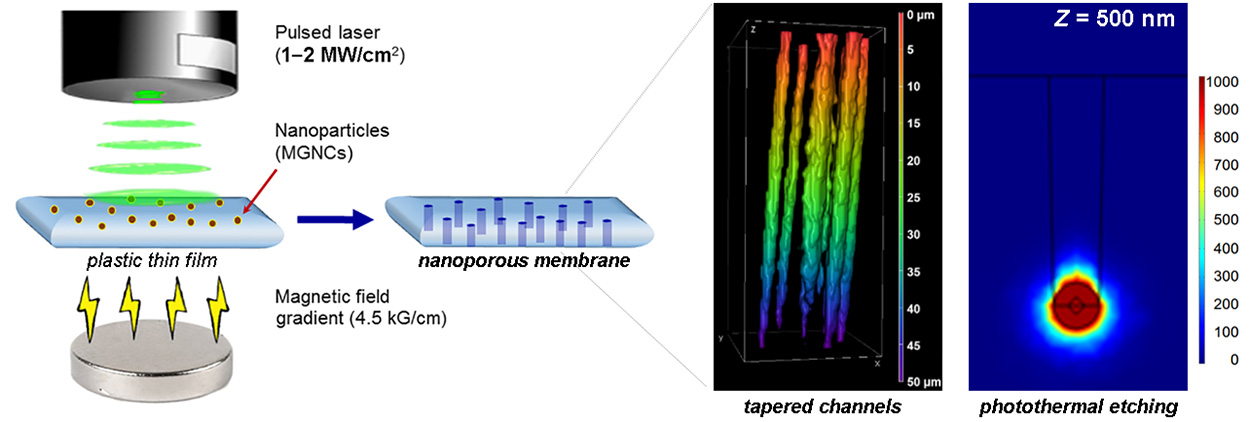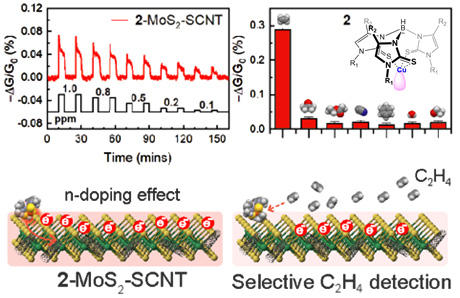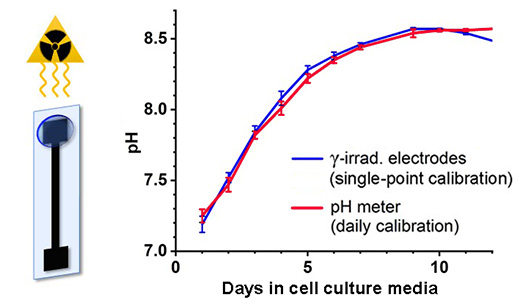Nanomanufacturing and chemical sensors
The Internet of Things (IoT) revolution is supported by sensors of low size, weight and power, and cost (SWAP-C), which are essential for driving real-time analytics. Sensors that detect light, sound, motion, and other physical inputs are abundant and cheap, but SWAP-C technologies for chemical sensing are less mature. Reproducibility, scalability, and manufacturing costs are some of the barriers hindering their widespread adoption.
We design thin-film electronic sensors that address specific needs and problems posed by government and industrial partners, guided by the dual perspective of materials chemistry and engineering. Sensor designs and production are aligned with materials cost and compatibility with scalable manufacturing processes. Chemistry plays an essential role for developing and formulating active ingredients including nanoparticles, 2D materials, novel organic salts, polymers, and supramolecular receptors. Sustainability is also an important factor for designing workflows with low carbon footprint and reduction in hazardous waste and exposure. Many of our efforts take place in the Roll-to-Roll (R2R) Facility at the Birck Nanotechnology Center with support from the SMART Films consortium, whose mission is to develop scalable manufacturing processes for wireless SWAP-C sensors. Recent examples of thin-film sensors published with sponsored research include gas sensors for the sensitive and selective detection of ethylene, and radiation-tolerant sensors for monitoring pH in sterile cell culture media.
Left, Ethylene sensor with CuTm complex; right, radiation-tolerant pH electrode in cell culture media.
We also invent new methods of additive manufacturing for introducing nanostructured features into bulk materials, turning passive substrates into functional ones. For example, thermoplastic films and even glass can be converted into nanoporous membranes by using magnetic gold nanoclusters (MGNCs) as etching agents. Photothermal effects and magnetomotive forces act synergistically under ambient conditions to make this process efficient and practical. Control over the etching process enables the production of complete channels or close-ended pores, for applications involving chemical separations or disposable wrappers embedded with nanosensors (intelligent packaging).

Nanoparticle-mediated photothermal etching as an additive manufacturing process.

